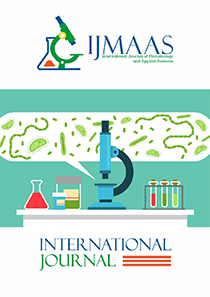A Review – Elucidating the Virulence Factors of Clostridiodes difficile
Vol 4, Issue 2, 2025
KEYWORDS
Clostridiodes difficile,, Virulence, Toxins, Binary Toxin Genes, Glycosyltransferases, Pathogenicity Locus, Antibiotics.
Abstract
Clostridiodes difficile a spore forming, Gram positive anaerobic bacterium, has been observed to be the most prevalent infectious cause of antibiotic associated diarrhea (AAD) which has both mild and chronic cases. Virulence factors of C. difficile include Toxin A and Toxin B (TcdA and TcdB) and CDT toxin. Toxigenic C. difficile may produce two major toxins which act as glycosyltransferases, toxin A (308 kDa) and toxin B (270 kDa). These toxins on release from the cell modify through glycosylation the Ras superfamily of small GTPases within enterocytes, thus inactivating these proteins and, hindering important cell signaling pathways. Thus this review aimed to collate and discuss the virulence factors of C. difficile. C. difficile from literature search was observed to have multiple virulence factors and multidimensional in functionality which could be contributing to its adverse clinical manifestation. Thus, therapeutic handling of infected cases has to be multidimensional in approach, not just aimed at destroying causative organisms but also targeting other virulence factors such as damages caused by its toxins and its sporulation capacity.
Current: Vol 4, Issue 2, 2025

Call for papers
The International Journal of Microbiology and Applied Sciences warmly welcome your valuable articles for publication.
